CAA News Today
Global Conversations at the 2021 Conference
posted by Allison Walters — February 01, 2021
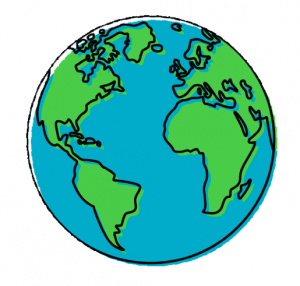
Celebrating Ten Years of the CAA-Getty International Program!
CAA-Getty Global Conversation I: The Migration of Art and Ideas
Live Q&A: Thursday, February 11, 10-10:30 AM
CAA-Getty Global Conversation II: The Climate Crisis, Pandemics, Art, and Scholarship
Live Q&A: Thursday, February 11, 12-12:30 PM
CAA-Getty Global Conversation III: The Challenges, Disobediences and Resistances of Art in the Transnational Imagination
Live Q&A: Friday, February 12, 12-12:30 PM
CAA-Getty Global Conversation IV: Disruptive Pedagogies and the Legacies of Imperialism and Nationalism
Live Q&A: Friday, February 12, 2-2:30 PM
CAA-Getty Global Conversation V: A Multiplicity of Perspectives at the Museum of Modern Art (In conversation with curators at MoMA)
Live Q&A: Saturday, February 13, 10-10:30 AM
See conference schedule for details:
https://caa.confex.com/caa/2021/meetingapp.cgi
International News: The Van Abbemuseum in the Netherlands Explores the Legacies of Colonialism in a Solo Exhibition by Victor Sonna
posted by Allison Walters — January 08, 2021
The following article was written in response to a call for submissions by CAA’s International Committee. It is by Ilaria Jessie Obata, an art historian and curator currently completing an MA in Curating Art and Cultures at the University of Amsterdam.
Victor Sonna’s first solo exhibition, 1525, which opened at the Van Abbemuseum in Eindhoven in July 2020, tells a multilayered story of personal introspection and shared colonial legacies. This collaboration between the artist and the museum is among the most recent exhibitions that fall under the mission scope of Musea Bekennen Kleur (Museums Confess Color), a contemporary platform established in Amsterdam in March 2020, in which “museums take accountability and responsibility through ongoing conversations about achieving diverse and inclusive institutional settings” (Musea Bekennen Kleur, https://museabekennenkleur.nl/).
The Van Abbemuseum, a participant in this project, is also one of the first museums in the Netherlands to embark upon a steady process of decolonizing its exhibitions and collections. This institutional decision was further marked by the Van Abbemuseum’s 2007 exhibition, Be(com)ing Dutch, in which participating artists Anette Kraus and Petra Bauer criticized racialized images of Zwarte Piet (Black Pete), which perpetuate the use of black face for the Sinterklass holiday (Saint Nicholas). The museum encountered severe backlash from the far-right party in the Netherlands for its criticism of the Dutch holiday, which further exposed this contested discussion within the country as whole. This response exemplified the need to continue the process of decolonizing cultural and educational platforms that perpetuate racial stereotyping. Therefore, Sonna’s solo exhibition builds upon the museum’s desire for institutional accountability regarding the Netherland’s recent past and its involvement with the trans-Atlantic slave trade. Sonna and the Van Abbemuseum decided to organize an exhibition with a dynamic narrative that would prompt discussion about contemporary colonial legacies. Working together, Sonna, Van Abbe director Charles Esche, curator Steven ten Thije, and guest curator Hannah Vollam, designed and curated an exhibition that presented Sonna’s research from multiple perspectives.
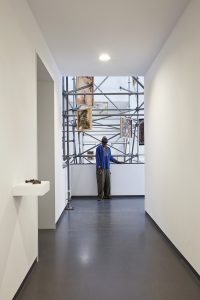
Figure 1. Victor Sonna in his 1525 exhibition at the Van Abbemuseum, 2020. Photo: Ronald Smits
Born in 1977, Victor Sonna is a visual artist who moved to the Netherlands at age nineteen from Yaoundé, Cameroon. Having studied at the Design Academy in Eindhoven and then at the AKV | St. Joost in Den Bosch, Sonna is based in Eindhoven and works in various mediums. His Van Abbemuseum exhibition includes three installations of tapestries, prints, and audio-visual material. The exhibition narrative started with his purchase of a pair of chains that once belonged to an enslaved person in New Orleans. The number 152 was engraved on these chains and thus remains the focal point for the exhibition title, 1525 (Fig. 1). Sonna’s installations regularly refer to the commoditization of human life under slavery, or rather “…the treatment of persons as property or, in some kindred definitions, as objects… when the individual is stripped of his previous social identity and becomes a non-person, indeed an object and an actual or potential commodity” (Igor Kopytoff, “The Cultural Biography of Things: Commoditization as Process,” in The Social Life of Things: Commodities in Cultural Perspective, p. 65). Sonna’s purchase led to his own research on the socio-historical impact of colonial exploitation, which constructed and perpetuated the commodification of human life for Western imperial profit.
His audio-visual works, which contextualize and document the slave trade in Ghana, are shown in six separate film installations in the exhibition. Sonna visually captured the external and internal space of Fort Elmina, a former slave trading post that was seized and consolidated by the Dutch in 1637. He documents remembrances of the trans-Atlantic slave trade, which have remained imprinted upon the walls of the fort and linger within the smell of the dungeons. The fort “plays a central role within the exhibition since the title,1525, also corresponds to the year marking the departure of the first slave ships from the West African coast to the Caribbean islands”(Harmen van Dijk, TrouwNL, 18 July 2020, translated from Dutch by the author). Sonna used this historical research to better understand the dehumanizing effects of the trans-Atlantic slave trade that turned enslaved African individuals into commodities, and led to a specific form of merchandising the colonial: distinguishing people as objects and as lesser than human.
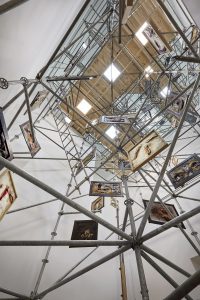
Figure 2. Victor Sonna, Tower of Babel, 2020, Van Abbemuseum. Photo: Ronald Smits
The accompanying installations showcase Sonna’s training as a visual artist as he meshes together the mediums of sculpture, metalwork and tapestry through the jaw-dropping 82-foot-high steam beam tower, from which his framed tapestries hang within the inner spire of the museum. This massive installation, titled the Tower of Babel (Fig. 2), contains the 152 tapestries that require multi-angled viewings because both sides of the frames are packed with layers of overlapping materials, from glued cane sugar to metallic nails and coins. Sonna gathered 152 European Gobelins tapestries, made between the eighteenth and twentieth century, which comprise his series Bleach and Dust, Sugar and Rubber and Maps. However, Sonna wanted to deconstruct the singular perception of these tapestries as representing “the history and prosperity of Europe” (Harmen van Dijk, TrouwNL, 18 July 2020, translated from Dutch by the author), by exposing the forms of exploitative slave labor used to extract materials such as sugar and rubber, which are imbedded and glued onto the surface of the tapestry. On Sonna’s website he states that this series approaches the “layering and displaying of connected histories that have been etched, trapped and layered in the earth” (Victor Sonna, http://victorsonna.com/site/news.php ).
Sonna presses different sculptural materials into the tapestries, creating multiple reliefs on their surfaces (Figs. 3,4,5). He “traps” metallic objects: coins, metal chains, and nails along with Kente cloth from Ghana that has been rolled up and sewn into the tapestries, and granulated cane sugar glued around the edges. He purposefully imbeds these materials into the textural DNA of the tapestry and locks each object inside it. The reliefs pushing out of the tapestry juxtapose the Gobelins framed surface with the visual effects of these contrasting materials, making us look again. The materiality of such commodities is weighed down by the history of their production, one fueled by the violence and death that characterizes the slave trade and its plantations. The artist’s desire to etch and trap together seemingly disparate materials creates a correlation between a shared European history of colonial exploitation and the creation of racial difference.

Figures 3, 4, 5. Victor Sonna, 2020, Van Abbemuseum. Photo: Ronald Smits
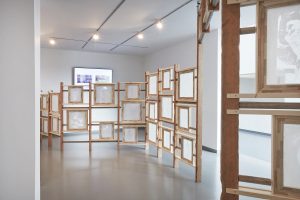
Figure 6. Victor Sonna, Wall of Reconciliation, 2020, Van Abbemuseum. Photo: Ronald Smits
Lastly, a striking section of this exhibition required two visitors to stand in front of one another, separated by a series of fifty-two silkscreen frames titled the Wall of Reconciliation (Fig. 6). The term “reconciliation” connotes Sonna’s desire to ensure that the printed image reconciled two opposing views. Every silkscreen required a dark backdrop in order to see the printed image; it is only visible if two visitors are standing on opposites sides of the same screen. Thus, the two viewers on opposite sides see the same explicit images of violence that are part of a series of drawings depicting slavery in Suriname, a Dutch colony that gained independence only in 1975. In Figure 7, the image depicts a young boy holding a rake, signifying the effects of enforced labor during the formative years of a child’s life and how it can mold a perception of the self that is intrinsically tied to an object of labor. Henceforth, each of these installations emphasized Sonna’s desire to deconstruct a biased and unilateral frame of reference.
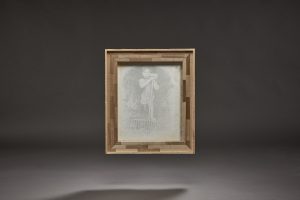
Figure 7. Victor Sonna, Wall of Reconciliation, 2020, Van Abbemuseum. Photo: Ronald Smits
1525, which has received acclaimed reviews in the Dutch press, is on display at the Van Abbemuseum until May 2021. Writers have collectively applauded the museum’s commitment to showcasing this stirring and historically fueled narrative. The Van Abbemuseum will continue to produce related public programming that is both accessible and reflective of its mission to highlight the legacies of Western colonialism in a Northern European context.
International News: Letters from the Asia Art Archive UnderLockdown (Part II)
posted by Allison Walters — November 17, 2020
This is Part II of an article that began last week in CAA News. It continues the coverage of life and work at the Asia Art Archive during the COVID-19 pandemic.
Mutual Aid, Cici Wu, Research Assistant, Asia Art Archive, New York
New York declared a state of emergency on March 7, 2020. I couldn’t foresee then that this would be my last chance to be in an art museum for many months. I was looking at the Portrait of America by Diego Rivera in the Whitney Museum, which he painted in 1933 for the Communist New Workers School in New York. The text panel said, “In keeping with the politics of the school, Rivera chose not to celebrate American values but instead to highlight uncomfortable truths about the class struggle and the country’s violence against African Americans.” In 1929, the crash of the US stock market caused many to question a capitalist system that seemed no longer compatible with the country’s democratic ideals. Artists resolved to use their art to effect change. Looking back at this period in history, when Mexican muralists were invited to make artworks by the State, it’s striking how artists were allowed to use their creativity and imagination so freely. They also imbued their art with a social role by depicting the real struggle of workers. It was uplifting.
A month before March 7, a memorial gathering for the Chinese doctor Li Wenliang was quietly held in Central Park (Fig. 1). The event was organized to stand against the further erosion of free speech in Mainland China. The park was not crowded. People were dispersed into smaller groups on a sunny afternoon, with murmurs, sighs, and tears. The flowers and banners carried words from the bottom of people’s hearts. At that moment, there was a hope that a little change could happen this time.
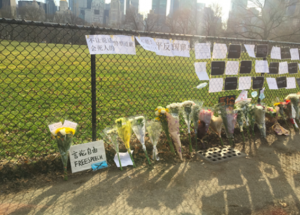
Figure 1. Memorial for Li Wenliang, Sheep Meadow in Central Park, New York, February 9th, 2020. Photo provided by the author.
After March 7, events seemed to accelerate, further unveiling lies, alongside vulnerability, rage and confusion. A wound was suddenly ripped open, resulting in a flowing river of blood. Sad news stories kept coming, one after another, from Italy, Iran, the UK, the Philippines, and the rest of the world. Airlines were collapsing. Small businesses were at risk. Middle-class and working-class people started worrying about their future. All of a sudden, restaurant workers, airline employees, and gig workers were on the verge of being laid off. Immigrants and undocumented residents without families were most at risk. More than ever, we learned that our social welfare was deeply tied to our immigration status in this country. We wondered, how are we going to collectively survive other crises, such as the huge environmental shifts and resulting displacements, that will come in the future?
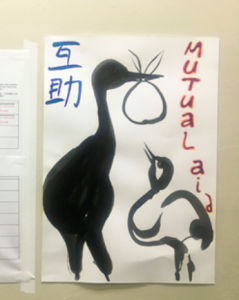
Figure 2. A mutual aid poster on display at 172 Henry Street in Chinatown, New York, April 25th, 2020. Photo provided by the author.
For a short time, New York became a site of discombobulation, isolation, and helplessness. The city was pale and empty. Workers in the arts, who were lucky enough to keep their jobs, started to work from home. Essential workers, including doctors, nurses, delivery drivers, and home caretakers, were getting off from work shattered. After a period of panic, some artists started to break out of their isolation and regather in small volunteer communities, helping food pantries, protesting against evictions, and organizing mask donations, all built upon the principle of Mutual Aid Community Agreements: “We Keep Us Safe” (Fig. 2).
The city began returning, bursting with idealistic energy. Most precious for the Asia Art Archive in America during this time has been the support and care we have been able to provide for each other. Invaluable weekly virtual meetings helped us stay connected and in dialogue, discussing together our changing thoughts throughout this critical time.
Our research collection, the Joan Lebold Cohen Archive Phase II was successfully launched online in the height of lockdown, on April 1. Three years after the launch of Phase I, the trips Joan Cohen took to China from the 1970s–2000s are finally fully available to explore and learn from: 16,453 color photographs of artists, artworks, studios, academies, exhibitions and scenes of everyday life. These images of a past world travelled through the years and arrived at a moment when nations are drifting apart towards isolation. In the midst of reimagining a new spatiotemporal organization of the world, the looks, smiles, and gestures Joan captured on film brought to mind air and light (Fig. 3).
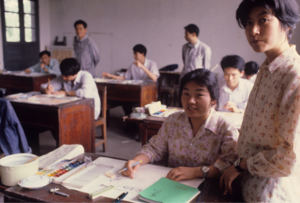
Figure 3. Students in art and design class at Guangzhou Art Academy, Guangzhou, China, 1980. Photo: Joan Lebold Cohen Archive, Asia Art Archive, NY
In Beijing and Hong Kong before returning to New York in February, I was saddened to have witnessed the virus hitting the collective body multiple times. Working through the Joan Lebold Cohen Archive was a healing process, to imagine myself traveling in time and giving light to the gaps of multiple pasts. I want to end here with a quote from the essay Solidarity/Susceptibility by Judith Butler (Social Text, 2018), from her remarks on José Muñoz, the Cuban American scholar of performance and queer studies who died in 2013, as an inspiration to think about archives and the new imaginary: “The potentialities that appear as rips and tears in the otherwise seamless future of no future for those abandoned by progress are immanent and furtive possibilities within the present, indicating that this time is also another time, and always has been; it opens toward a past and a future even when, politically, the force of oblivion seeks to cover over those very openings.”
Erasures and Experiments: The COVID-19 Story in India, Noopur Desai, Researcher, Asia Art Archive, India
Today, we are experiencing an unprecedented moment as we brave the COVID-19 crisis across the world. In India, the situation is complex, similar to many parts of the world, bearing multiple strands, with implications for various aspects of our lives. When the pandemic hit India in March of this year, though early cases were found in January, the country was going through a massive political movement demanding democratic constitutional rights. The announcement of a sudden lockdown across the country on March 22 resulted in the suspension of all social gatherings including, most importantly, the ongoing nationwide sit-in protests against the Citizenship Amendment Act and the National Register of Citizens in various cities and towns.
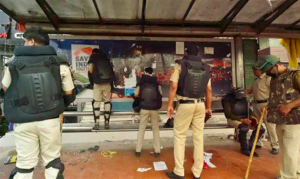
Figure 1. Graffiti and artworks at protest sites, removed by the police during the lockdown, “The Logical Indian,” March 27, 2020. Photo: Hindustan Times
In the midst of panic and uncertainty in conjunction with the mismanagement of the crisis, the previous two months began to appear a distant past with the erasure of politics and the transformation of public space during the lockdown. In effect, the public space was rather transformed, with images of a mass exodus as hundreds of thousands of migrant workers journeyed home from big cities after the closing down of markets, manufacturing units, and various laborer jobs. Combined with a sense of amnesia brought on by the spectacle surrounding the pandemic, the government actions (mis)used the situation to crackdown on dissenting voices, either by arresting social and political activists, defacing artworks and graffiti at protest sites (Fig. 1), or by exercising certain restrictions on media. Taken together these actions have highlighted the systemic inequality and repressive nature of the current regime.
Surrounded by this grave situation, various arts organizations, artists, and museums have had to reconfigure themselves. Several exhibitions and programs were canceled or postponed, and young arts practitioners moved back to their birthplaces or are struggling to survive in metropolitan centers like Delhi or Mumbai. Responding to the severity of the crisis, many arts practitioners and arts organizations have stepped up to create support systems, including grants for young artists, online displays of artworks, and the formation of chain-systems, wherein artists buy each other’s work. The arts community also created online auctions and other fundraising events to contribute to the relief work for migrant workers and other vulnerable populations.
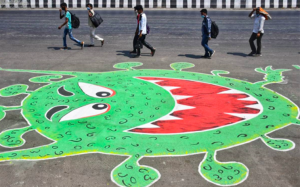
Figure 2. Migrant workers walk in front of a coronavirus graffiti in Mumbai, May 14, 2020. Photo: The Hindu
Physical distancing quickly resulted in digital proximity with the arrival of webinars and online exhibitions organized by museums and galleries, although the graph of the webinars seems to be “flattening” in recent times! However, the digital world has become an intrinsic part of our lives, whether it is through virtual studio visits, webinars, and simulated gallery tours or by creating online resources for teaching and learning. In terms of art education, studio-based practice has been replaced by experimentation with the digital, though only at a few schools, as most of them do not have the resources to run online programs. Nevertheless, there have been important instances where students have used digital platforms to organize their annual exhibitions, which are required for graduation, and which for the most part have not been able to take place physically. Though physical space is crucial in contemporary art practice, this intense effort to use alternative platforms has certainly paved the way for forming new aesthetic possibilities.
While we all are grappling with this strange time, at Asia Art Archive in India we continue building our online research collections and shaping new projects. As an online platform, we have been able to continue several aspects of our work by sharing digital resources and programming via our website. Despite this, we have also faced challenges in light of changing situations. Though our collections are available online, the groundwork to build those collections requires in-person visits to archives and libraries, access to review personal archives, resources to digitize the documents, and programs to introduce the archival collections; most of these activities have been brought to a halt for now. In the meantime, we are maintaining our spirits by planning and carrying out whatever aspects of our work we can, keeping in mind the need for physical distancing. At the same we are recalibrating our working methods as we venture into the “new normal.”
International News: Letters from Asia Art Archive Under Lockdown (Part I)
posted by Allison Walters — November 10, 2020
The following article was written in response to a call for submissions by CAA’s International Committee. It is by John Tain, Congyang Xie, Michelle Wong, Cici Wu, and Noopur Desai, all researchers at Asia Art Archive.
Introduction, John Tain, Head of Research, Asia Art Archive
In the first few months of this year, one thing that became clear was how deeply divided the world remained and remains, even as globalization brought us all closer physically and virtually. There have been of course the many overt racist acts around the world, and also the less visible but no less insidious effects of structural racism on individuals and communities of color. There also remains plain ignorance reinforced by geography. In long distance calls and video meetings, it became clear that what people across Asia recognized right away as a cataclysmic life-or-death disaster remained literally and figuratively a faraway concern for many people in the United States and Europe—until it wasn’t anymore.
At Asia Art Archive (AAA), we have seen the drama unfolding firsthand in both Asia and North America. Our colleagues in Shanghai went into lockdown almost as soon as the news came out of Wuhan, with our main office in Hong Kong soon to follow. For those first few weeks, outpourings of concern, sympathy, and sometimes curiosity accompanied the daily news and dreaded case tallies. Then, as the pandemic spread, it was our colleagues in New York and then New Delhi who were hit, along with the rest of the world, and it became our turn to send support and supplies when possible. We had already been in the habit of meeting regularly on Zoom as a way to work across distances, but throughout these months, talking with one other online became about more than work. It became a way to bridge the chasms keeping us apart all the more now. It is in the spirit of those conversations that I have asked my colleagues to share their thoughts, as reminders that whatever the disparities, we must deal with this together.
The Pandemic and Politics, Congyang Xie, Research Associate, Asia Art Archive, Shanghai
In early February, two weeks after the shutdown of Wuhan due to the outbreak of the coronavirus, an article was published by Slovenian philosopher Slavoj Žižek titled “Clear Racist Element to Hysteria over New Coronavirus.” Translated into Chinese and circulated through the social media platform WeChat, it quickly became one of the most widely shared texts among contemporary art practitioners in Mainland China. Žižek, who has built a large readership in China over the last decade, began by saying that “Some of us, including myself, would secretly love to be in China’s Wuhan right now, experiencing a real-life, post-apocalyptic movie set.” (https://www.rt.com/op-ed/479970-coronavirus-china-wuhan-hysteria-racist/)
More challenging statements followed. Unsurprisingly, there were all kinds of reactions within the art world, which amplified when more articles were published and circulated via WeChat by other Western thinkers who are more or less known to Chinese art practitioners, including Jean-Luc Nancy, Jacques Rancière, and especially Giorgio Agamben (Fig. 1). But the controversies around Žižek were particularly interesting. If Žižek’s text, as many have pointed out, disregarded the local context in China, the reading and sharing of the article in Chinese was also decontextualizing. The (re-)awareness of the very existence of intellectual borders that so many people tried hard to ignore may be one of the by-products of COVID-19.
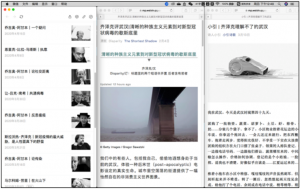
Figure 1. Left: A WeChat account publishing translated articles by various Western philosophers regarding the pandemic. Middle: Screenshot of Žižek’s article published in Chinese. Right: Screenshot of an article by Chinese poet Xiao Yin, titled “The Wuhan City That Žižek Cannot Understand”. Photo provided by the author.
Reading the text in a literal way, Žižek’s fiercest critics denounced the philosopher as naïve, if not delusional, for saying the situation in Wuhan was desirable, for ignoring the real tragedy in Wuhan, and for being indifferent to the dead and to those who were still suffering. Such opinion is based upon a humanistic attitude. The most extreme camp, however, went so far as to reach a nationalist point of view, concluding that Westerners never understand what is happening in China, and that Western theories are irrelevant and not applicable to China’s problems.
Another group of critics, non-nationalists, with a more liberal mindset, were thus highly attentive to Žižek’s call for “a new form of what was once called Communism.” Based on modern and contemporary history of China, this group considers Communism as just the flip side of the coin of authoritarianism. Taking individual freedom as a priority, this group worried that the activity-monitoring technologies used by the government in the name of containing the epidemic would eventually normalize and strengthen total governmental control over society, even after the epidemic ends.
This critical attitude towards authority was shared by a third group of people, who would agree at least partially with Žižek, citing his words that “If there were people in China who attempted to downplay epidemics, they should be ashamed.” In fact, during the first days of the coronavirus outbreak, transparency from authorities was the strongest demand from all of China’s social groups. The protest reached a peak when Li Wenliang, the whistleblower doctor who was forced to keep silent by authorities, was reported to have passed away from the deadly disease on February 7. That night, lit-candle emojis were all over social media. In response to the event, artist Zhang Peili designed a minimalist set of two T-shirts, which are worn frequently by artists and visitors to exhibitions (Fig. 2).
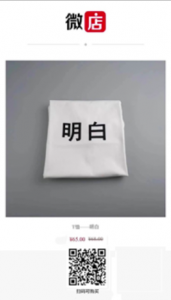
Figure 2. Online shop selling T-shirt designed by Zhang Peili. The text means “I understand.” Photo provided by the author.
The debates highlight the ideological conflicts in China that have only intensified under the pandemic, though more space would be needed to map the full spectrum of opinions. Perhaps what makes Žižek’s text so appealing to art practitioners in China in the first place is the claim that “there is, however, an unexpected emancipatory prospect hidden in this nightmarish vision,” even if people may have (mis)understood it in a thousand different ways.
Separate yet Together, Michelle Wong, former Researcher, Asia Art Archive, Hong Kong
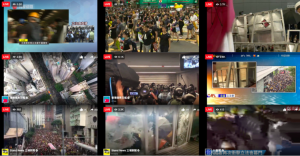
Figure 1. Screenshot of news livestream, July 1, 2020. Photo provided by the author.
One evening in March 2020, when Hong Kong’s first wave of COVID-19 cases was subsiding, we sat in a friend’s studio to look at the image archive of an artist-run space. “100 Square Feet Park,” or the Park, as we affectionately call it, was once a storefront on Lai Chi Kok Road, facing busy traffic. The image we were looking at was of a documentary exhibition from the Umbrella Movement of 2014. A monitor was placed on a table facing the street level. Pedestrians walking by wondered whether the images shown in the monitor were live or documentary images. It struck me at that 2020 moment, as we looked at the image five years on, that I had forgotten how it felt when livestreaming news—of marches, of roads puffing with smoke, of sparks flying out from long tubes, of people in all sorts of uniforms running—was not yet a norm. I remember an inexplicably overwhelming feeling of looking at the nine images on the split-screen livestreaming for the first time, and I thought my simmering anger would rise to the boiling point if I saw one more Instagram post that attempted to theorize this over-mediation.
For some time now I have pondered the morbidity that is part and parcel of my vocation as a researcher at AAA. It is only half a joke when I describe my job as “talking to old(er) people and working on dead people stuff”. On various occasions I have described archives as haunted and haunting, trains for zombies, and repositories for art that could be undead. I still think about these things when I peer and squint at my computer screen while on Zoom/Jitsi/Skype. During the time leading up to the pandemic, and perhaps also during it (i.e. now), I think often about a generation of practitioners, many of them friends and colleagues who I have met through my work at AAA. I think of how these people, myself included, have knowingly or unknowingly committed ourselves to remembering other people’s lives. Everyone who tells stories of other people’s lives, in this case through dealing with their archives, is learning how to do so along the way, much like writers learning how to write. And as we remember these lives and tell these stories, our stories can become entangled with theirs. Sometimes, it is nice to know you can choose not to do it alone.
International News: The Treasures of the Punjab Archives, Lahore, Pakistan
posted by CAA — September 28, 2020
The following article was written in response to a call for submissions by CAA’s International Committee. It is by Kanwal Khalid, Director of the Punjab Archives, Lahore, Pakistan, and an alumna of the CAA-Getty International Program.
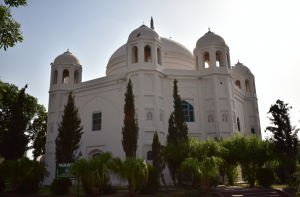
Figure 1. The Punjab Archives, housed in the Tomb of Anarkali, a building from the reign of Mughal Emperor Jahangir (1605-1627). (All photographs in this article provided by the author)
Having spent my career as a university professor, I recently was appointed the director of the Punjab Archives in Lahore. This rich collection is one of the best in South Asia and I am pleased to share a description of the institution, which also includes a library and museum, with readers of CAA News, who will soon be able to access many of the collection’s materials online.
The history of every nation is important and documents that reveal a nation’s history become increasingly precious over time. The majority of these documents are held in archives—collections that are both accumulations of historical data and repositories of record. Pakistan contains many rich archival collections: The National Archives of Pakistan and the National Documentation Centre, both located in Islamabad; the Sindh Archives in Karachi; and the Baluchistan Archives in Quetta. But the oldest of them all is the Punjab Archives in Lahore, located inside the Tomb of Anarkali.
The Punjab Archives is significant both for the immense value of its holdings and for the historical importance of its building (Fig.1), which was built during the reign of Mughal Emperor Jahangir (1605-1627). It was originally a tomb attributed to a woman named Anarkali, traditionally thought to be a concubine of Jahangir’s. According to the date written on the cenotaph, the monument was completed in 1615. The building has witnessed many ups and downs in its four-hundred-year history. After the annexation of Punjab by the British in 1849, the building was used as storage for documents pouring in from all parts of South Asia that were under the control of the British Raj. Two years later it became a church used for Sunday services, but in 1891 it was declared a record office.
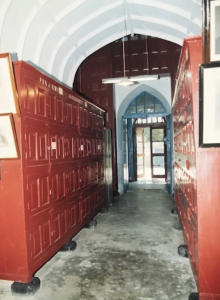
Figure 2. Inside view of the Archives.
Punjab Archives Collection
The Punjab Archives (Figs. 2, 3a-b) holds one of the largest repositories of documents in South Asia and it is responsible for the safekeeping of official documents and records of the Pakistan government. It houses census reports, civil and military gazettes, official files, historical documents, manuscripts, handouts, brochures, pamphlets, maps, notifications, memoranda, lithographs, research papers, journals, magazines, newspapers and periodicals. Many of these cannot be found anywhere else in the world. The archive also includes a fine collection of miniature paintings and seals.
The records in the Punjab Archives date back to the seventeenth century and cover the Mughal, precolonial, colonial and postcolonial eras in South Asia. Primarily the collection consists of:
- Persian Record of Mughal Period, 1629-1858
- Persian Record of Sikh Period, 1799-1849
- Akhbar Darbar-e-Lahore (Daily Court Proceedings of Sikh Rulers), 1835-1849
- Persian Record of British Period, 1809-1890
- Old Persian Newspapers, 1840-1845
- Colonial Agencies Record, 1804-1849
- Record of Princely States in Punjab, 1849-1947
- Record After the Annexation, 1849 to 1947
- Record After Independence, 1947
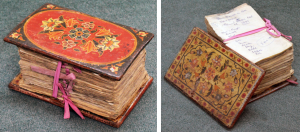
Figure 3a, b. Beautifully illuminated wooden boards used as file holders, first half of 19th century.
The Archival Library
Sir Edward Meclagan served as chancellor of University of the Punjab (1919-1924) and Governor of Punjab (1923). He was a historian whose passion for knowledge is evidenced by his donation of rare and out of print books to the Archives. This initiative led to the establishment of a small but important library that still exists today.
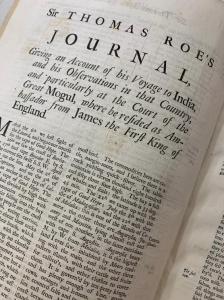
Figure 4. The oldest book in the Archives Library, Sir Thomas Roe’s Journal, 1616.
The collection consists of biographies, reports and travelogues. Currently the library holds more than 70,000 highly valuable reference books. The oldest book is a memoir, Journal of Sir Thomas Roe, which dates to 1616 and recounts the author’s journey to different parts of India (Fig. 4).
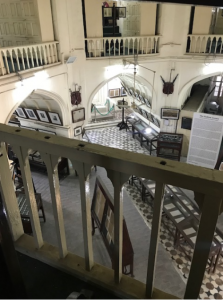
Figure 5. The central hall of the tomb, housing the Archives Museum.
Archives Museum
Another person who played an important role for the Archives was Lord Malcolm Hailey. He went one step beyond his predecessor and established a small museum in 1924 in the central hall of the tomb (Fig. 5). This collection, still maintained today, contains portraits of important Lahore personalities (Fig. 6), along with paintings, prints, maps and lithographs. Mughal Farmans (proclamations), important official letters, old stamps, medals, weapons, and miniatures are also on display (Fig. 7).
Digitization
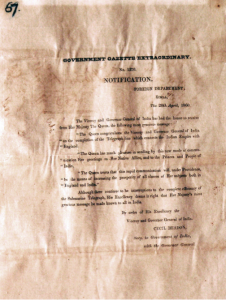
Figure 7. A message from the Queen of England to the viceroy on the completion of the telegraph line to India, 1860.
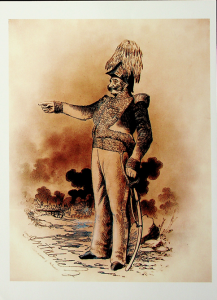
Figure 6. A general of Ranjit Singh’s army, General Avitabile, early 19th century.
For the past several years, the Punjab Archives has been in the process of digitizing its collection to improve accessibility to scholars. Approximately 500,000 pages of historic documents are currently being scanned and catalogued, precluding the need to move the fragile original documents, thus minimizing their wear and tear. A web portal will make these digitized documents accessible under the authorization of the Punjab Archives. This project is a first step towards a long-term strategy of modernizing the Punjab Archives and Libraries. To date, more then 120,000 pages have been digitized. Although the project was scheduled to be completed by June 2021, the Covid-19 pandemic has brought all activities to a standstill. Once completed, the archives online services will be a primary resource for scholars throughout the world. In the meantime we are providing information to any researcher who contacts the Archives Department by email at archivesdirectorate@gmail.com.
International News: “My World Now Is Black in Color:” Pandemic-Era Programming, Anti-Racist Activism, and Contemporary Art in Italy
posted by CAA — August 11, 2020
The following article was written in response to a call for submissions by CAA’s International Committee. It is by Tenley Bick, Assistant Professor of Global Contemporary Art, Department of Art History, Florida State University, and the 2019–20 Scholar in Residence at Magazzino Italian Art Foundation, New York. A related essay, “Ghosts for the Present: Countercultural Aesthetics and Postcoloniality for Contemporary Italy,” will be included in an edited volume forthcoming from Lexington Books.
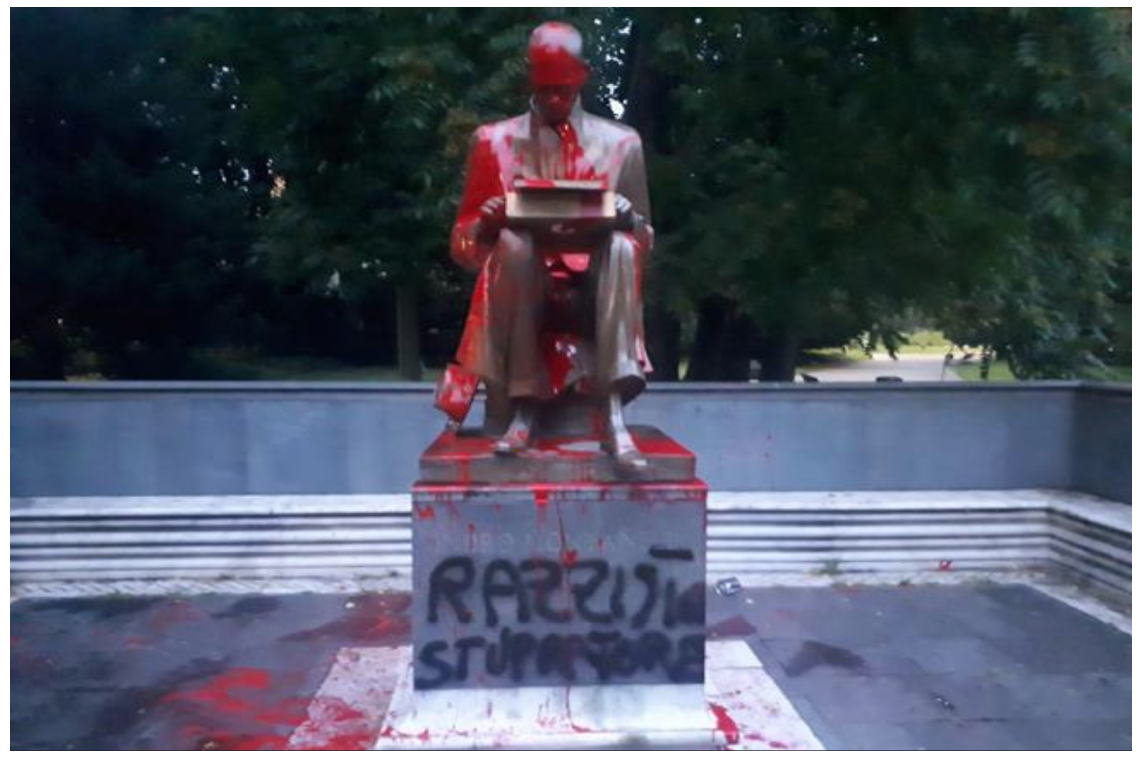
Figure 1. “Indro Montanelli, imbrattata la statua a Milano” (Indro Montanelli, statue smeared in Milan). Corriere della Sera, June 13, 2020 (https://www.corriere.it/cronache/20_giugno_13/indro-montanelli-statua-imbrattata-81a5c120-adad-11ea-84a7-c6d5b5b928b0.shtml). Photo: AP
June 13, Milan. The 2006 monument to Italian journalist Indro Montanelli was found covered in red paint and tagged “razzista, stupratore”: racist, rapist. The intervention targeted the statue of Montanelli and the journalist’s past as a colonial soldier in East Africa. In 1935, Montanelli bought a twelve-year-old Eritrean girl, Destà, to serve as his wife under the practice of madamismo. Montanelli never apologized. The intervention ignited public debate in Italy on racism and public monuments, bringing the country popularly known for apathy toward its colonial and fascist histories, pervasive associated monuments and street names into renewed transatlantic debates on these topics. Four days prior, Italian-Somali writer Igiaba Scego, writing on anti-Black racism, Black Lives Matter, and monument debates in the United States and Europe in the Italian weekly Internazionale, made a call for Italy to confront the “uncomfortable traces of our past.” Citing an earlier intervention at the Montanelli monument in 2019, Scego noted the absent memorialization of Destà: “It would be nice if someone, whether a street artist or a municipality, dedicated a statue, a drawing, a memory to that distant child” (trans. Bick). Street artists and activists responded (Figs. 2–3). Cities did not. The Montanelli monument was cleaned and, by mayoral decision, remains in place.
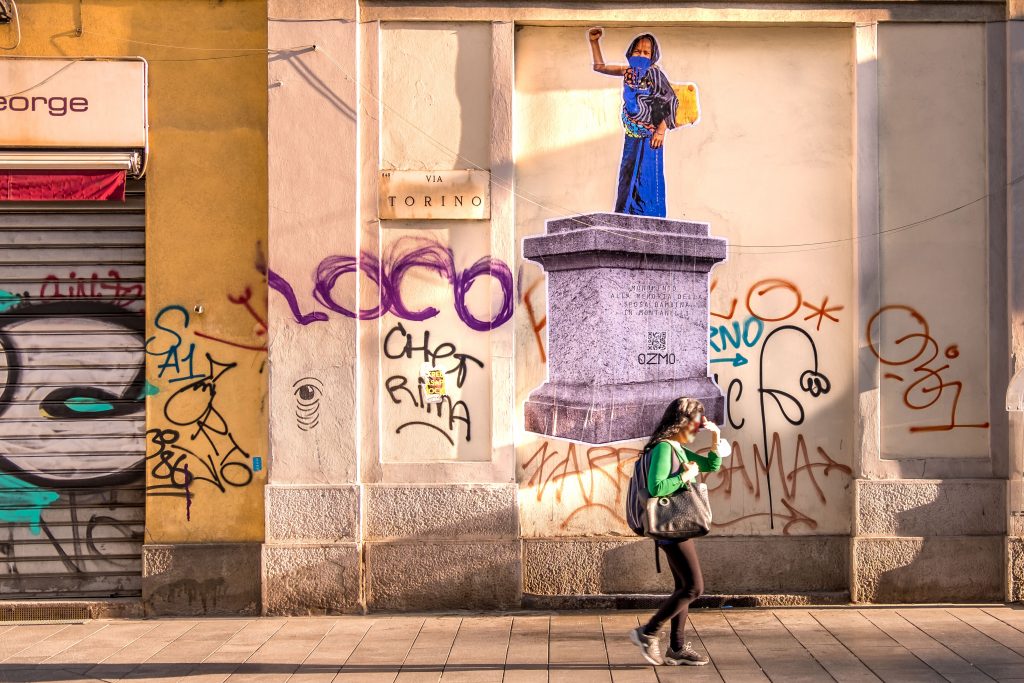
Figure 2. In Milan, Italian street artist Ozmo’s mural depicts a fictional monument to Destà, the Eritrean child “bride” of Indro Montanelli, when the famous journalist was a colonial soldier. Working specifically in response to Igiaba Scego’s call, the artist used a photo of a contemporary Eritrean girl of approximately the same age as Destà upon her “marriage,” to stand defiantly in place of Montanelli on the base of his monument, relabeled in memory to “Montanelli’s child bride” (IG @ozmone, June 15). The mural was vandalized within two days. Inkjet on blueback paper, measurements to site (dimensioni ambientali). Photo by Gianfranco Candida, @wallsofmilano. Courtesy of Ozmo.
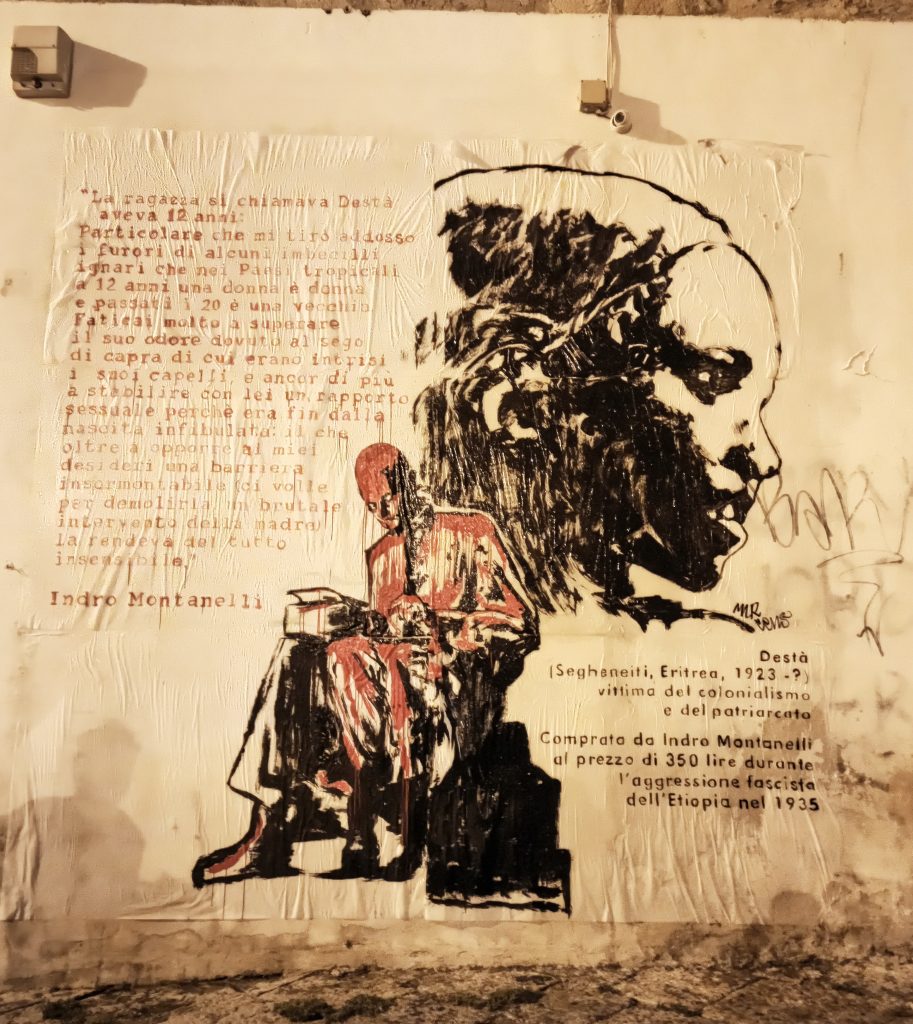
Figure 3. In Palermo, artists Mr. Cens, Betty Macaluso, and Ulrike conceived the mural depicting the vandalized monument to Montanelli and a portrait of Destà. Mr. Cens executed the large public mural. Acrylic on tissue paper, 9.8 x 9.8 ft. (3 x 3 m). Palermo, June 16, 2020. Courtesy of Mr. Cens. The mural builds upon a 2018 work by Wu Ming 2 (Giovanni Cattabriga) and Palermo-based artist collective Fare Ala (Luca Cinquemani, Andrea Di Gangi, Roberto Romano), Viva Menilicchi!, which temporarily renamed via Montanelli “via Destà.”
One of the first hotspots in the COVID-19 pandemic, Italy was then emerging from a three-month lockdown. During that time, Italian museums (public and private) became leaders in innovative arts programming for a pandemic-era world. The Museo Madre launched an #iorestoacasa “call to action” campaign, publishing artists’ responses to the pandemic online; the Galleria Nazionale d’Arte Moderna invited and posted videos about its permanent collection; the Fondazione Prada produced podcasts and alternative exhibition encounters through its #innerviews and #outerviews programs, using social media as a “laboratory” for “new formats and codes” (@FondazionePrada, Mar. 18). This innovation has since extended to safety technology. Florence’s Museo dell’Opera del Duomo introduced wearable sensors to ensure social distancing—technology subsequently implemented by institutions of Italian art outside of Italy. Magazzino Italian Art Foundation (New York) is the first museum in the United States to use the technology, reopening with Homemade (cur. Vittorio Calabrese with Chiara Mannarino), an exhibition of work made during the pandemic by New-York-based Italian artists.
While the Montanelli debate coincided with a moment of reckoning for institutions in the United States and Western Europe, the overwhelming majority of art museums in Italy have not announced such programming, policy changes, or statements of solidarity. This inattention is not due to a lack of anti-racist social justice activism in Italy (Black Lives Matter Roma, Neri Italiani, the Stati Popolari movement, among others), nor is it due to an absence of Black Italians in Italian popular culture, especially in literature (Scego), cinema (Fred Kuwornu, Amin Nour), and music (Ghali).
A few exceptions demonstrate the potential for institutionally supported, sustained, collaborative programs to counter anti-Black racism in Italy. The Uffizi has partnered with Black Lives Matter Florence on a series of virtual programs to address “the presence of black culture in European art, told through the works of the Gallerie degli Uffizi” (https://www.uffizi.it/video-storie/black-presence). Organized by Justin Randolph Thompson, co-founder and director of Black History Month Florence (BHMF), in collaboration and partnership with the Uffizi as part of their On Being Present program, the eight-week series entitled “Black Presence” debuted July 4th with Thompson’s video discussion of a Piero di Cosimo work and continues with concerts and video tours on representations of Black Africans in Renaissance art. MAXXI, one of Italy’s major contemporary museums, launched a short-lived social media initiative: #MAXXIforblacklivesmatter. The campaign “aims in raising awareness and consciousness of the @blklivesmatter movement through art” (@museomaxxi). With eighteen tagged Instagram posts (most recently dated June 17), the museum posted images of BLM protests in Italy and works by African and African diaspora artists Robin Rhode, John Akomfrah, and Yinka Shonibare from MAXXI’s 2018–19 exhibitions. The initiative was highlighted on June 12 by Italian-Haitian-Ghanaian cultural curator and Griot founder Johanne Affricot in an essay for Artribune as a “necessary” if late action amidst the generally delayed response from arts and culture in Italy to BLM in comparison to the global context (“Black Lives Matter ma non in Italia. Il ritardo dell’arte e della cultura nel paese,” June 12). Program information is notably no longer available on MAXXI’s bio.
Beyond these varied efforts, Black artists have been included in major museum and gallery exhibitions, and Black curators have curated exhibitions at prominent museums, but these figures are almost always non-Italian artists and art workers. While Italy is becoming increasingly multi-ethnic (and multi-racial), the country does not track ethno-racial statistics (Reynolds 2018, BBC; Ambrosetti and Cela 2015). Instead, citizenship and place of birth serve as “proxies” for race and ethnicity (Ambrosetti and Cela 2015). This is one of many reasons—from racial laws under fascism to renewed racism in response to cross-Mediterranean migration—why Blackness in Italy is most associated with foreign identity (with populations of African migrants, immigrants, and residents) rather than with Italian identity as well.
Two Afro-Italian artists—Jem Perucchini (b. 1995) and Luigi Christopher Veggetti Kanku (b. 1979), both based in Milan—are making inroads that might change that. Perucchini made a series of portraits of Black Italians in history for Vogue Italia during Black History Month (see Jordan Anderson, Mar. 12, 2020) (Fig. 4).
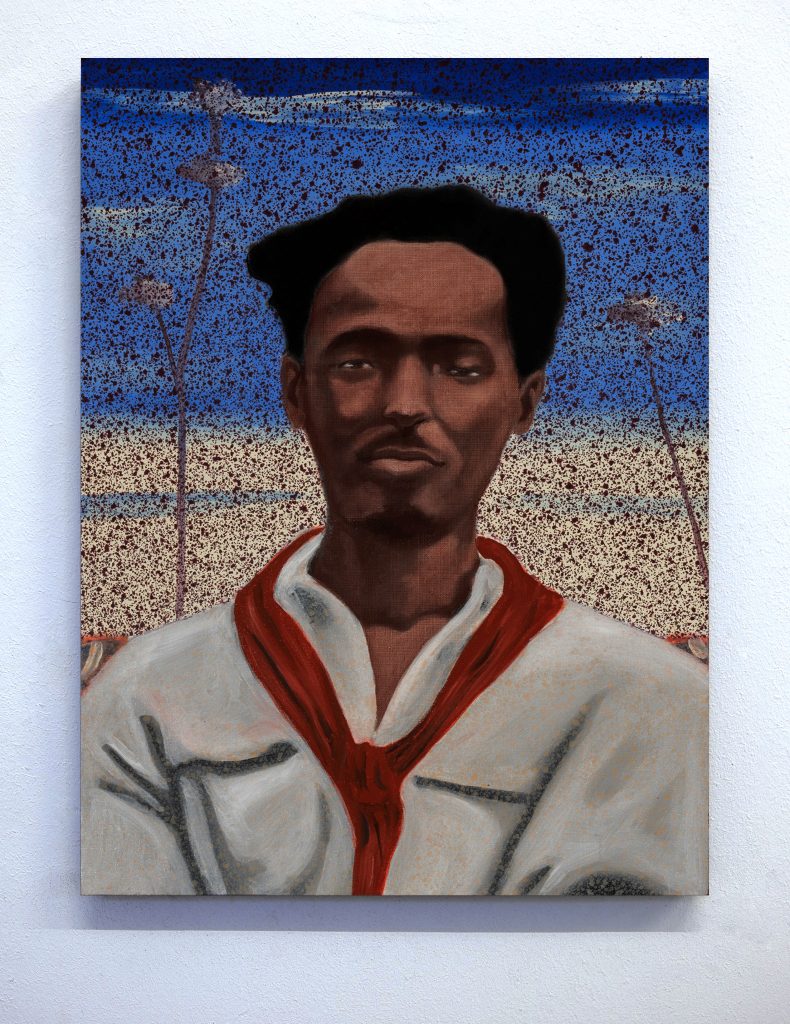
Figure 4. Jem Perucchini’s Alessandro Sinigaglia (2020) depicts a little-known Black, Jewish Italian member of Italy’s anti-fascist resistance during World War II. Oil on linen, 15.75 x 12 in. (40 x 30 cm). Courtesy of Jem Perucchini.
Harper’sBazaarTV followed with a “visual interview” in mid-July. When asked “What colour is your world, these days?” the Ethiopian-Italian artist responded: “Certainly my world now is black in color. I think it is the color that is most suited to represent the situation that the whole world is experiencing, in terms of sanitary, economic, social problems” (interview by Laura Taccari, trans. Bick). At the end of lockdown, Perucchini had completed a large painting of the Stele of Axum: the ancient obelisk that Italy returned to Ethiopia in 2005, nearly seventy years after stealing it as war spoils (Zoom interview with Bick, Fig. 5).
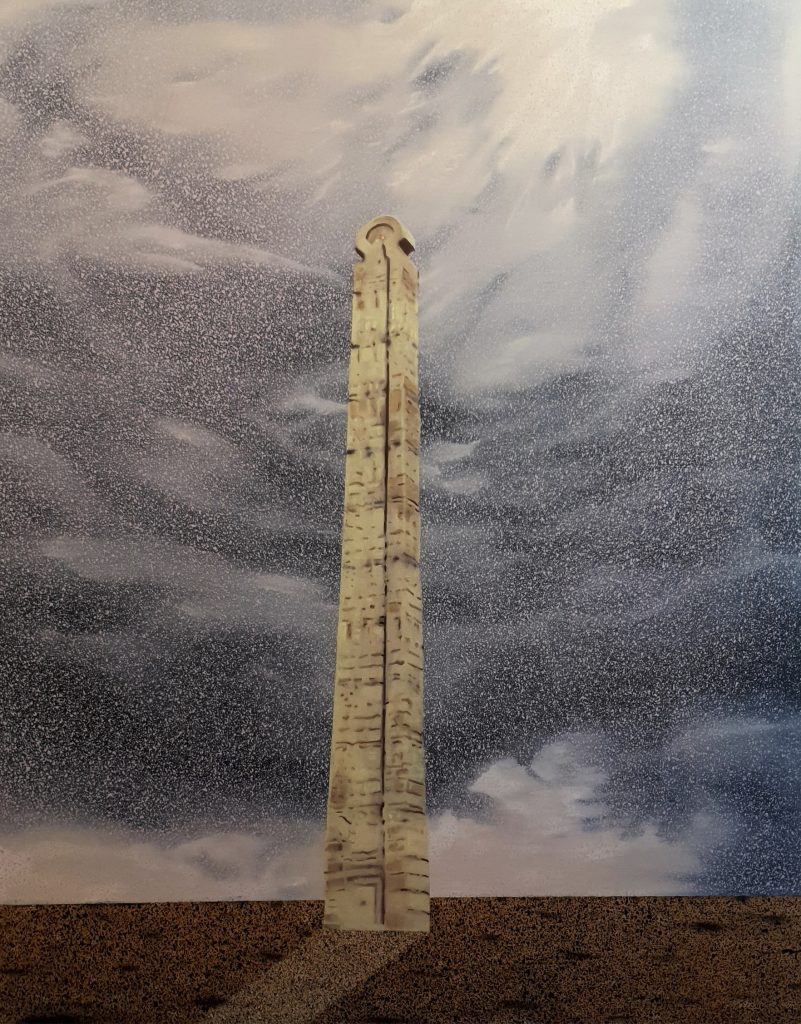
Figure 5. Jem Perucchini, Axum, 2020. Oil on linen, 55 x 43 in. (140 x 110 cm). Courtesy of Jem Perucchini. Completed during the lockdown, Perucchini’s Axum depicts the fourth-century stele that was taken as war spoils during Italy’s second colonial invasion of Ethiopia. The stele remained on display in Rome for nearly seventy years.
Veggetti Kanku (represented by Galleria Rubin, Milan) has confronted the institutional and cultural marginalization of Black people in Italy directly. In late June, the Congolese-Italian artist held a soft opening of a new exhibition space in Milan’s center for Afro-Italian artists (Zoom interview with Bick, Jun. 29). Entitled The Office, the evenings-and-weekends-only arts space is a legal office during regular business hours. Veggetti Kanku’s monumental portraits of Black women (Fig. 6), intended to bring Black figures into (white) Italian bourgeois homes (Griot, Mar. 25; Zoom interview with Bick), hang in the space, to be inaugurated this fall with his solo show SOTTOPELLE: “A show dedicated to black women, inclusive of social status, a show that destabilizes and puts up for discussion the canons of strictly Western beauty in an ever-increasing multi-ethnic Italian reality” (Veggetti Kanku, email correspondence with the author, July 16, trans. Bick).
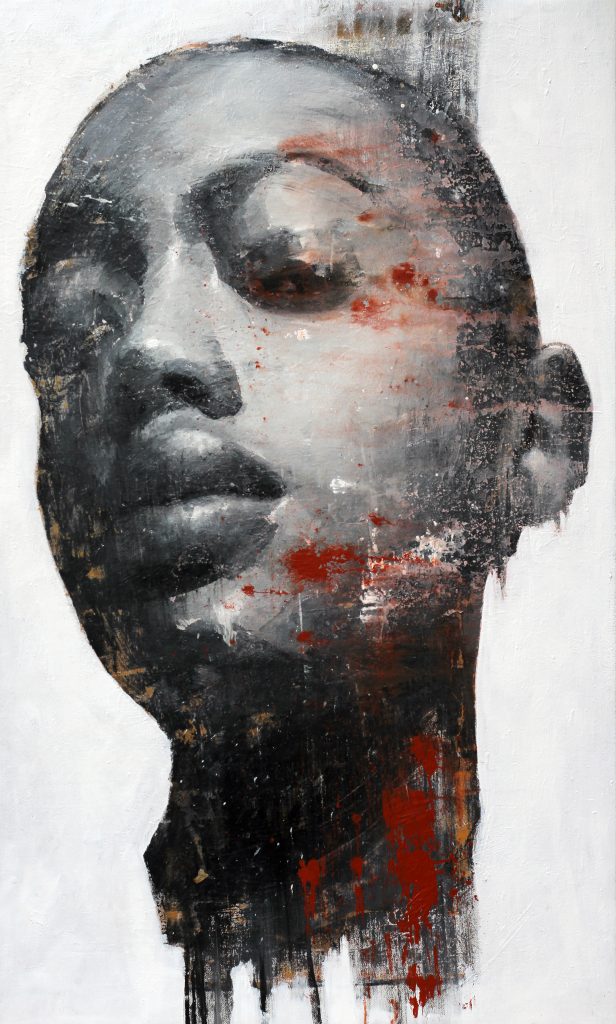
Figure 6. Luigi Christopher Veggetti Kanku, Untitled, 2020. Oil and acrylic on canvas, 65 x 39 in. (165 x 100 cm). Veggetti Kanku’s monumental portraits of Black women will be exhibited in his solo show, SOTTOPELLE (UNDERSKIN) at his new space for Afro-Italian artists, The Office, located in the center of Milan.
The museum complex now perhaps most directly engaged with Italy’s colonial history, the Museo delle Civiltà (home to Italy’s national ethnographic museum and partial repository of Italy’s colonial collection, formerly at the Museo Coloniale di Roma and various iterations that followed), has announced plans for a new museum (in development since 2017) dedicated to Italian colonialism in Africa (including postcolonial periods and an engagement with contemporary art): the Museo Italo-Africano Ilaria Alpi, to open in 2023. (See Scego, and Giulia Grechi and Viviana Gravano’s interview with colonial collections’ curator and cultural anthropologist Rosa Anna Di Lella in Roots–Routes). As Italy begins to address the presentness of its colonial past, the absence of Black Italian artists in Italy’s museums and galleries persists. What might a Perucchini or Veggetti Kanku exhibition look like at MAXXI or the Galleria Nazionale? What might happen if the innovation of Italian arts programming and centrality of the arts to Italian identity made space for the multi-ethnicity of Italy today? It remains to be seen if and how the country’s art museums and galleries—leaders in arts programming in many ways—will address racial inequity in their own collections.
The Getty Foundation to Fund the CAA-Getty International Program for a Tenth Year
posted by CAA — June 25, 2020
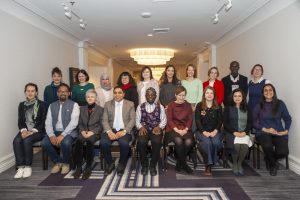
CAA-Getty Scholars at the 2020 Annual Conference in Chicago. Photo: Stacey Rupolo
The Getty Foundation has awarded CAA a grant to fund the CAA-Getty International Program for a tenth consecutive year. Unlike previous years, the 2021 program will take place virtually, due to the COVID-19 pandemic and the challenges of bringing international scholars to New York to attend the 2021 Annual Conference. CAA is especially grateful to the Getty Foundation for sustaining its support during these uncertain times, when maintaining contact with our international colleagues is more important than ever. Turning this crisis into an opportunity, the twenty participants in next year’s program will spend the time between now and February exploring the advantages of online technology for enriching scholarly research and building global bonds. Meme Omogbai, CAA’s new executive director, stated “We appreciate not only the Getty Foundation’s ongoing support, but also its faith in the CAA-Getty program to pursue scholarly excellence and innovation in an acutely challenging time. We believe the participants in this program will help lead the way for CAA’s future growth in international programs and membership.”
Over the coming months, the participants—all alumni of the program—will work in small online groups to workshop their conference papers, originally planned to be presented in person at the 2021 Annual Conference. What can be gained by geographically-distanced scholars collaborating regularly over the next six months, discussing and critiquing each other’s work? How will ideas evolve and change from early conversations to completed presentations?
The 2021 CAA-Getty program participants will also explore opportunities provided by online exchanges to produce resource materials for other scholars. Using recordings of the online discussions and the conference presentations, the group will initiate a virtual archive containing video and text documentation of the year’s work, including podcasts, bibliographies, and references related to the themes of the conference sessions. Although this virtual program breaks with the patterns established by the first nine years of the program, its forward-looking experiment in online scholarship is a fitting way to celebrate the tenth anniversary of a program that promises new models for robust scholarship in the post-COVID world.
“We applaud CAA for a taking a bold step to reimagine the international program online,” says Joan Weinstein, director of the Getty Foundation. “This thoughtful approach to digital engagement will teach us all a great deal about how to maintain international perspectives and connections in this new post-pandemic reality.”
The CAA-Getty International Program was established in 2011-12 to increase international participation in CAA and the CAA Annual Conference. The program fosters collaborations between North American art historians and curators and their international colleagues and introduces visual arts professionals to the unique environments and contexts of practices in different countries. Since the CAA-Getty International Program began, it has brought 135 first-time attendees from 49 countries to CAA’s Annual Conference. Historically, the majority of international registrants at the conference have come from Canada, the United Kingdom, and Western European countries. The CAA-Getty International Program has greatly diversified attendance, adding scholars from Central and Eastern Europe, Russia, Africa, Asia, Southeast Asia, the Caribbean, and South America. The majority of the participants teach art history, visual studies, art theory, or architectural history at the university level; others are museum curators and researchers.
About the Getty Foundation
The Getty Foundation fulfills the philanthropic mission of the Getty Trust by supporting individuals and institutions committed to advancing the greater understanding and preservation of the visual arts in Los Angeles and throughout the world. Through strategic grant initiatives, it strengthens art history as a global discipline, promotes the interdisciplinary practice of conservation, increases access to museum and archival collections, and develops current and future leaders in the visual arts. It carries out its work in collaboration with the other Getty Programs to ensure that they individually and collectively achieve maximum effect.
2021 CAA-Getty International Program Participants
Danielle Becker, Stellenbosch University, South Africa
Federico Freschi, Otago Polytechnic, New Zealand
Georgina Gluzman, University of Buenos Aires, Argentina
Richard Gregor, Trnava University, Slovenia
Alison Kearney, University of the Witwatersrand, South Africa
Sandra Krizic Roban, Institute of Art History, Croatia
Peju Layiwola, University of Lagos, Nigeria
Daniela Lucena, University of Buenos Aires, Argentina
Priya Maholay-Jaradi, National University of Singapore
Ana Mannarino, Federal University of Rio De Janeiro, Brazil
Parul Mukherji, Jawaharlal Nehru University, India
Cristian Nae, George Enescu National University of Arts, Romania
Marton Orosz, Museum of Fine Arts, Hungary
Ceren Ozpinar, University of Brighton, United Kingdom
Dasha Panaiotti, Hermitage Museum, Russia
Valeria Paz Moscoso, Universidad Católica Boliviana San Pablo, Bolivia
Judy Peter, University of Johannesburg, South Africa
Horacio Ramos Cerna, City University of New York
Nora Veszpremi, University of Birmingham, United Kingdom
Giuliana Vidarte, Pontifical Catholic University, Peru
CAA-Getty International Program at CAA 2020
posted by CAA — March 17, 2020
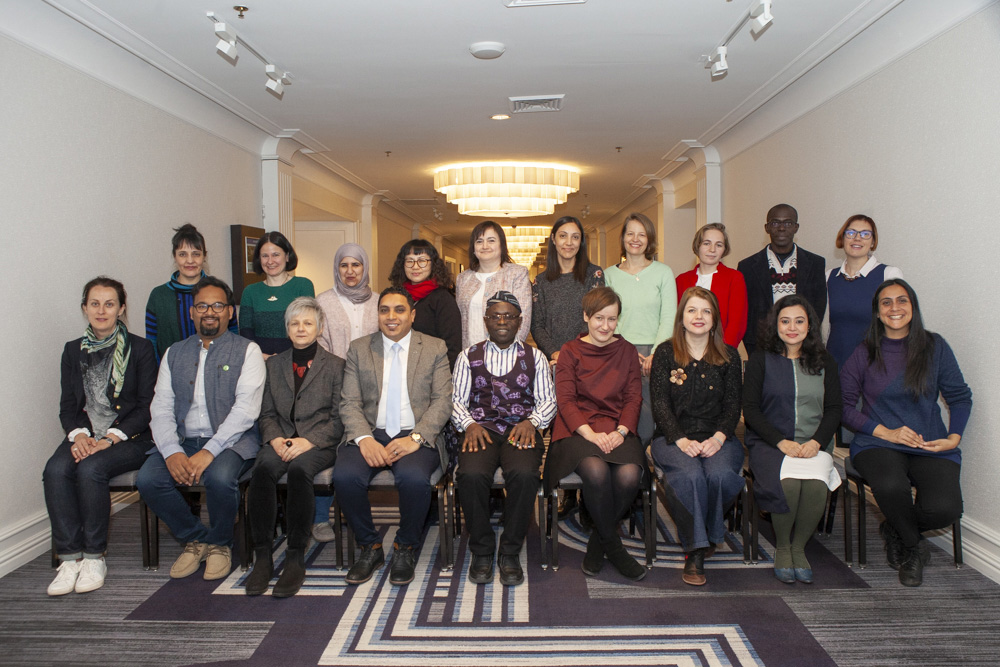
2020 CAA-Getty International Program Participants, photo by Stacey Rupolo.
Front row, left-right: Julia Waite (New Zealand), Saurabh Tewari (India), Daria Jaremtchuk (Brazil), Ali Mahfouz (Egypt), Akande Abiodun (Nigeria), Aleksandra Paradowska (Poland), Iro Katsaridou (Greece), Priya Maholay-Jaradi (Singapore), Giuliana Vidarte (Peru); Back row, left-right: Valeria PazMoscoso (Bolivia), Nora Veszpremi (Hungary/UK), Eiman Elgibreen (Saudi Arabia), Pedith Chan (Hong Kong), Mariana Levytska (Ukraine), Daniela Lucena (Argentina), Katarzyna Cytlak (Poland), Daria Panaiotti (Russia), Jean-Arsène Yao (Côte d’Ivoire), Irene Bronner (South Africa); Not pictured: Ganiyu Jimoh (Nigeria)
One for the Scrapbook! The 2020 CAA-Getty International Program participants—twenty scholars from nineteen countries—arrived in Chicago on the Sunday before the conference to get ready for a busy week of meetings, sessions, and one-on-one conversations. With this year’s participants, the program now includes 135 scholars from 48 countries, adding for the first time representatives from Bolivia, Singapore, and Côte d’Ivoire.
The preconference colloquium on February 11 was held at the School of the Art Institute of Chicago and featured papers on indigenous artists and contemporary art, the politics of cultural heritage, new subjects for art history, artistic exiles, and critical pedagogies.
Eleven US-based CAA members served as hosts for the international visitors, introducing them to scholars in their fields, taking them to Chicago-area museums, and attending their preconference colloquium.
Toward the end of the week, five alumni added their voices to the annual Global Conversation session, this year addressing Art History and the Politics of Vision.
As Julia Waite, from New Zealand, summarized the week: “Attending the CAA conference was hugely stimulating, and I left feeling excited about the future of art history. It reminded me of the strengths of deep art historical research in providing a more complex and nuanced understanding of art and society.”
Meet the 2020 Travel Grant Recipients
posted by CAA — January 29, 2020
CAA offers Annual Conference Travel Grants to graduate students in art history and studio art and to international artists and scholars. Meet this year’s recipients below.
CAA GRADUATE STUDENT CONFERENCE TRAVEL GRANTS
CAA awards Graduate Student Conference Travel Grants to advanced PhD and MFA graduate students as partial reimbursement of travel expenses to the Annual Conference.
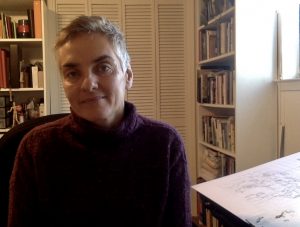
Maureen Burdock, University of California, Davis
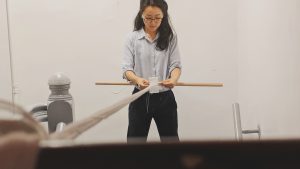
Josephine Lee, Parsons School of Design
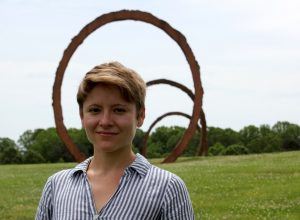
Brantly Hancock Moore, University of North Carolina at Chapel Hill
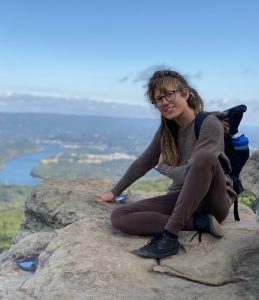
Nicole Winning, University of Massachusetts at Dartmouth
CAA INTERNATIONAL MEMBER CONFERENCE TRAVEL GRANTS
CAA awards the International Member Conference Travel Grant to artists and scholars from outside the United States as partial reimbursement of travel expenses to the Annual Conference.

Alex Burchmore, Australian National University
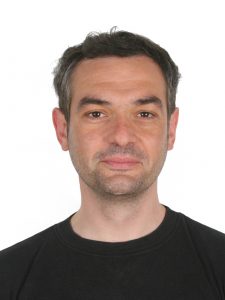
Panos Kompatsiaris, National Research University Higher School of Economics,Moscow
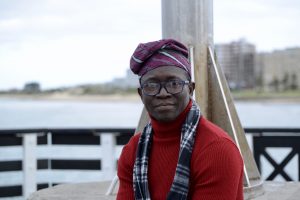
Stephen Adéyemí Folárànmí, Rhodes University, South Africa
CAA TRAVEL GRANT IN MEMORY OF ARCHIBALD CASON EDWARDS, SENIOR, AND SARAH STANLEY GORDON EDWARDS
Established by Mary D. Edwards with the help of others, the CAA Travel Grant in Memory of Archibald Cason Edwards, Senior, and Sarah Stanley Gordon Edwards supports women who are emerging scholars at either an advanced stage of pursuing a doctoral degree or who have received their PhD within the two years prior to the submission of the application.
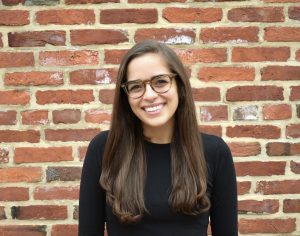
Kristen Nassif, University of Delaware
Paper: Seeing Through Blindness: Disability, Tactile Relief Maps, and Geography
Session: Disability in the Arts: The Active Participation of People with Disabilities in the Arts
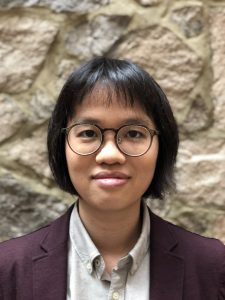
Shirlynn Sham, Yale University
Paper: The Eighth Wonder of the World: Design and Danger in Marc and Isambard Brunel’s Thames Tunnel Project
Session: Topographical Drawing
SAMUEL H. KRESS FOUNDATION CAA CONFERENCE TRAVEL FELLOWSHIP FOR INTERNATIONAL SCHOLARS
Recognizing the value of first-hand exchanges of ideas and experience among art historians, the Kress Foundation is offering support for international scholars participating as speakers at the 2020 CAA Annual Conference. The scholarly focus of the papers must be European art before 1830.
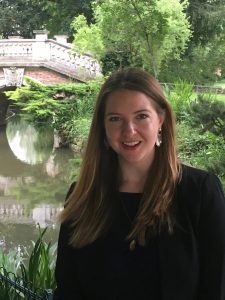
Sophie Ong, Rutgers University
Paper: ‘I pray…that I may have sommethyng for my nekke’: Understanding Jewelry and Its Popularity in the Late Middle Ages and Today
Session: Kitsch and Craft in the Middle Ages: Making Medieval Art Popular

Bruno Ligore, Nice University, France
Paper: Embodying the Antique in the Early 19th Century: Ballet Masters’ Drawing Practices
Session: Dancing in the archives: choreographers’ drawings as resources for art historians (19th-20th centuries)
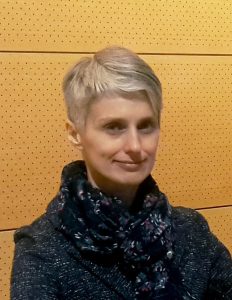
Halyna Kohut, Ivan Franko National University of Liviv, Ukraine
Paper: Is it the Rug or the ‘Other’?
Session: Different Shades of Othering: Orientalism/Occidentalism in the World of Art
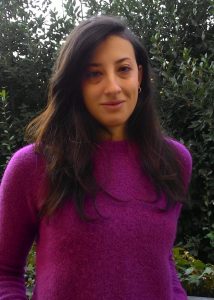
Elisa Antonietta Daniele, University of Verona, Italy
Paper: Performing Bodies, Dancing Trifles: Drawing New Worlds in Il Tabacco, Commemorative Album for the Courtly Ballet Staged in Turin (1650)
Session: Early Modern Animation: Mascarades, Ballet, Automata
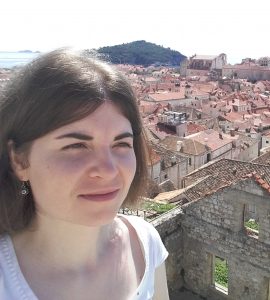
Estefanía López-Salas, Universidade da Coruña, Spain
Paper: Towards a Web-Based Representation of Spatial Change Over Time at San Julián de Samos
Session: Advanced Topics in Digital Art History: 3D (Geo)Spatial Networks
Elena Granuzzo, Independent Scholar, Italy
Paper: The Cicognara Library and Michelangelo Buonarroti: A Historiographical Reading through the Sources
Session: Historic Libraries and the Historiography of Art (II)
CAA-GETTY INTERNATIONAL PROGRAM
Every year since 2012, the CAA-Getty International Program has brought between fifteen and twenty art historians, museum curators, and artists who teach art history to attend CAA’s Annual Conference. This program is funded on an annual basis by the Getty Foundation. Click here to meet the CAA-Getty International Program participants.
CAA Affiliate ACSAA Condemns the Assault on Democratic Institutions and Intellectual Freedoms in India
posted by CAA — January 17, 2020
The American Council for Southern Asian Art (ACSAA), a CAA Affiliate Society, has condemned the ongoing assault on democratic institutions and intellectual freedoms in India. Read their statement below.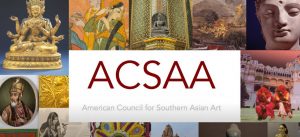
The American Council of Southern Asian Art (ACSAA), a non-profit organization and a community of academics and humanists, condemns the ongoing assault on democratic institutions and intellectual freedoms in India.
Both the Citizenship Amendment Act (CAA), signed on 11 December 2019, and the National Register of Citizens (NRC) Act, to be implemented in 2021, are openly discriminatory laws. We denounce any attempt at exclusion based on religion, caste, gender, race, or sexual identity, and find both laws to be antithetical to the Indian constitution and its democracy. In particular, as researchers and teachers of India’s art and architecture across millennia, we are committed to preserving the rich contributions of Muslims to its visual culture and intellectual life. We see this commitment as directly threatened by the violent, often state-sanctioned, erasure of such contributions, in instances such as the demolition of the Babri Masjid, the occupation of Kashmir, the renaming of cities, and the rewriting of academic curricula along Hindutva lines.
We stand in full support of the students and teachers at Aligarh Muslim University and the Jamia Millia Islamia, following the events of 15 December 2019; at Jawaharlal Nehru University, following events there on 5 January 2020; and everyone currently participating in peaceful protests and demonstrations across the country. We see the brutal attack at JNU—organized and executed by members of the Akhil Bharatiya Vidyarthi Parishad (ABVP), the student faction of the Hindutva organization, the Rashtriya Swayamsevak Sangh (RSS) and, with the ruling Bharatiya Janata Party (BJP), a member of the Sangh Parivar—as one more instance of a widespread denial of the rights of Indian citizens to critique their government peacefully and openly.
The accusations of “anti-nationalism” directed at marginalized communities at these confrontations – particularly Muslims, Dalits, and women – are reminders of the extent to which extremists will go to erode the secular principles on which the country was founded.
To date, there have been no arrests or investigations into the identity of the attackers at JNU, despite indisputable evidence. We deplore the negligence of the Delhi Police, who looked on as the attacks happened, and call for both an immediate investigation and the resignation of JNU’s Vice Chancellor, M. Jagadesh Kumar. Following as it does the instances of police violence at Aligarh Muslim University and Jamia Millia Islamia, as well as long-term interventions including cuts to funding and fee hikes, the JNU attack urgently increases our concern, as part of the global academic community, for public higher education and critical thought in India.
The American Council for Southern Asian Art (ACSAA) is dedicated to advancing the study and awareness of the art of South and Southeast Asia and the Himalayan regions, spanning all periods and forms of artistic production.
Related reading: In Photos: The World’s Largest Democracy Is in Upheaval (Quartz India, December 15, 2019)
Police Fire Tear Gas as Delhi Protesters Decry Citizenship Law (Al Jazeera, December 15, 2019)
I Saw Police Stand by as Masked Men Attacked Students at a Top Delhi University. It Was Yet Another Assault on India’s Intellectuals (Time, January 8, 2020)
Behind Campus Attack in India, Some See a Far-Right Agenda (New York Times, January 10, 2020)


